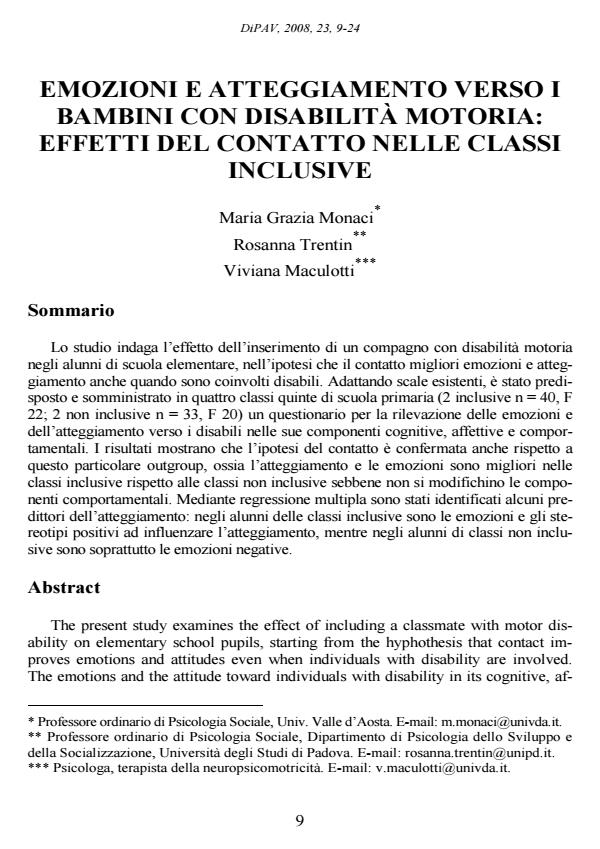Emozioni e atteggiamento verso i bambini con disabilità motoria: effetti del contatto nelle classi inclusive
Journal title DiPAV - QUADERNI
Author/s Maria Grazia Monaci, Rosanna Trentin, Viviana Maculotti
Publishing Year 2008 Issue 2008/23 Language Italian
Pages 16 P. 9-24 File size 397 KB
DOI
DOI is like a bar code for intellectual property: to have more infomation
click here
Below, you can see the article first page
If you want to buy this article in PDF format, you can do it, following the instructions to buy download credits

FrancoAngeli is member of Publishers International Linking Association, Inc (PILA), a not-for-profit association which run the CrossRef service enabling links to and from online scholarly content.
Emozioni e atteggiamento verso i bambini con disabilità motoria: effetti del contatto nelle classi inclusive - The present study examines the effect of including a classmate with motor disability on elementary school pupils, starting from the hyphothesis that contact improves emotions and attitudes even when individuals with disability are involved. The emotions and the attitude toward individuals with disability in its cognitive, affective, and behavioral components were measured by a questionnaire devised adaptating existing scales and administered to the pupils of four elementary school classes (2 inclusive, n = 40, F 22 and 2 non-inclusive, n = 33, F 20). Results show that the contact hypothesis is confirmed also with this special outgroup. In other words, attitude and emotions are better in the inclusive than the non-inclusive classes, although behavioural components do not change. Multiple regression analyses have identified some predictors of attitude: positive emotions and stereotypes influence the attitude of pupils in the inclusive class, while negative emotions particularly influence the attitude of pupils in the non-inclusive classes.
Maria Grazia Monaci, Rosanna Trentin, Viviana Maculotti, Emozioni e atteggiamento verso i bambini con disabilità motoria: effetti del contatto nelle classi inclusive in "DiPAV - QUADERNI" 23/2008, pp 9-24, DOI: